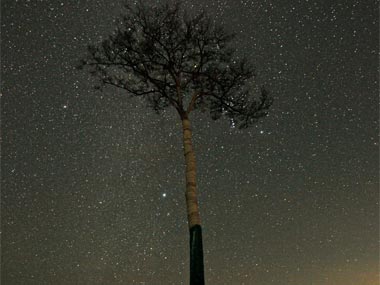Rikuzentakata, Japan: Very little was left standing in the Japanese city of Rikuzentakata when it was struck by the massive tsunami of March 2011. Even the centuries-old pine forest by the sea that had long been a symbol of the city was obliterated. But amidst the destruction that killed about one in 12 of the city’s residents, one lonely pine tree out of more than 60,000 has clung to life along the ravaged coast. It came to embody residents’ hopes for renewal. [caption id=“attachment_222529” align=“alignleft” width=“380” caption=“The miracle pine tree of Rikuzentakata is dying: Reuters”]  [/caption] “We didn’t have any hope at the time. So even having one survive really was like having a beam of light shining through the darkness,” said 47-year-old Seiko Handa. But now the 250-year-old pine tree is dying, a victim of the salt water left in the ground by the tsunami. “Even towards the beginning we in charge of the tree were worried that it would indeed die off,” said Kazunari Takahashi, an official at the city’s Forest, Fisheries and Agricultural Department. Originally planted as a windbreak to keep salt and sand from blowing in from the sea and wreaking havoc in the fields, the rows of pines known as Takata-Matsubara stretched along two km (a mile) of beach and were one of the most famous sites of northern Japan. But the nearly 10-metre (33 ft) wall of water that roared in after a 9.0 magnitude earthquake struck offshore on March 11 last year obliterated even the land where the forest had stood, along with more than 3,000 buildings in the city. Nearly 2,000 people were killed in Rikuzentakata. In all, about 25,000 people perished in northeast Japan. Now, city officials have abandoned hope of keeping the tree alive. There has been talk of preserving it where it stands, even if it were to die, as a memorial but that could cost up to 300 million yen and looks unlikely to happen given the need for much more pressing reconstruction work. The tree’s expected demise has set off a flurry of efforts to save at least part of it for future generations. “We took a small graft from the tree and used that as one method to help keep the tree’s heritage alive,” said Takahashi. “We also gathered up the pine cones attached to the tree and the few remaining seeds to raise its successors.” Using those seeds, a company has managed to raise some saplings which city officials hope to one day use to plant a new forest. No matter what, the tree will live on symbolically on the face of commemorative coins the government will issue to investors who buy special bonds to raise funds for reconstruction. The 1,000 yen and 10,000 yen coins will feature an image of the tree with doves flying above it. “We decided to use this design in the hope of recovery for east Japan as it has doves flying above a symbol of one of the places that was damaged,” explained Japanese Finance Minister Jun Azumi when announcing the new coins. The Rikuzentakata pine is not the only botanical symbol of rebirth along the swathe of coast devastated by the tsunami. Just to the south, in the hard-hit city of Kesennuma, one pine tree has begun to grow through cracked concrete. Pushing its way up besides destroyed buildings and not far from the site of another pine forest that was washed away, the sapling has attracted much attention as it forces its way up towards the sky. “It’s still pretty small but it’s doing its best,” said resident Katsushi Sato. “I’d have to say it’s somehow kind of encouraging.” Reuters
A lone pine tree that survived the Japan tsunami in Rikuzentakata is dying because of high salt content in the soil.
Advertisement
End of Article
Written by FP Archives
see more


)
)
)
)
)
)
)
)
)



